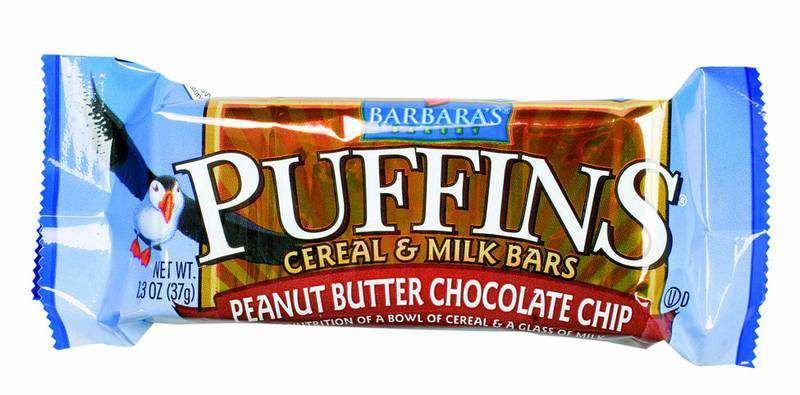Breakfast bars a poor substitute
Published 4:00 am Thursday, November 16, 2006

- Barbaras Bakery Puffin cereal & milk bars, Peanut Butter Chocolate Chip
Walk down the cereal aisle in your grocery store, and you’ll notice a new invader fighting for space. Breakfast bars, the next link in the dietary evolution chain after granola bars, fit well with American’s hectic, no-time-for-a-morning-meal lifestyle.
But while a breakfast bar may represent a good stop-gap or emergency measure, it’s no substitute for the real thing, says registered dietitian Vanessa Vargas.
”Breakfast is one of the most important meals,” says Vargas, who provides nutritional and weight-loss counseling at Bend Memorial Clinic. ”But it’s a common skipped meal.”
Eating breakfast has been shown to boost a person’s metabolism by about 25 percent, meaning they burn more calories during the day. And people who eat breakfast are less likely to overeat at dinner. It’s no wonder that eating breakfast is one of the common denominators for successful weight loss as identified by the National Weight Control Registry. Kids who eat breakfast do better in school, and research suggests the same may be true for adults at work.
Clearly, it’s not a meal to be treated lightly.
”It’s really an opportunity for someone to get a lot of fiber in their diet, especially through high-fiber breads and high-fiber cereals,” she says. ”I also encourage some source of protein either from a low-fat dairy or a lean meat, because it helps with satiety.”
That’s a lot to ask from a breakfast bar. Here’s how they stacked up:
Calories:
”Most of the breakfast bars range from 120 to 220 calories,” she says. So that’s pretty minimal.”
The average person consumes about 2,000 calories during the day, and about 300 to 500 calories in a healthy breakfast. So a single breakfast bar is better than eating nothing, and eating is better than merely drinking, but it will likely leave you hungry before you get to work.
Fiber:
Vargas says few of the bars provide any meaningful amounts of fiber, something a traditional breakfast tends to cover well. Quaker’s new Oatmeal To Go bars topped the fiber list with about 5 grams per bar, but also include some high fructose corn syrup. Kashi’s TLC bars, sold more as granola bars, have about 4 grams of fiber apiece. A bowl of high-fiber cereal, for comparison, contains about 5 grams of fiber; a slice of whole wheat bread, about 2 grams.
Sugar:
Most of the breakfast bars get their calories from added sugar. Kellogg’s Pop Tarts pack in more than five teaspoons of sugar. Even a Nutri Grain bar comes with 3 teaspoons of sugar, mostly in the form of high fructose corn syrup in the fruit filling. (And don’t even try to call that a fruit serving!)
Fat:
Breakfast bars typically are low in fat, although some still contain partially hydrogenated oils, known as trans fats. ”You’re not going to see those often in a good cereal or toast,” Vargas says.
Protein:
Few bars have any significant amount of protein, which helps keep you satisfied a little longer. South Beach breakfast bars include 10 grams of protein, 3.5 grams of fat, and 7 grams of sugar. But many of the bars touting themselves as low-carb, including South Beach, Atkins and Slim Fast, are sweetened with sugar alcohols, such as sorbital, mannitol and lactitol.
”There’s not so much danger in consuming sugar alcohols, but they can cause a lot of gastrointestinal distress, bloating, cramping,” Vargas says.
Weight:
Meals that are bigger in volume and weight – regardless of calories – make us feel fuller. Size matters, but most of the breakfast bars weigh only an ounce or two. A bowl of oatmeal, on the other hand, weighs about 6 to 8 ounces.
”That is going to stick in my stomach and give it more of the sensation of fullness,” she says. ”It’s going to expand my stomach and send those signals to my brain that I’m full.”
Best bets:
Breakfast bars made by organic or natural food manufacturers, such as the Nature Valley, Nature’s Choice and Kashi brands, tend to be a little better, she says. They avoid the high fructose corn syrup and the partially hydrogenated oils. They run about 150 to 180 calories, and have more of the healthy monounsaturated fats, usually from nuts. Most still are low in fiber and have some added sugar.
Barbara’s Bakery brand Puffin Bars is also a good all-around choice, with about 3 grams of fiber, 8 grams of sugar, 5 grams of protein and 3 grams of fat. But while an organic toaster pastry might be a step up from a non-organic toaster, it’s still essentially a Pop-tart with 4 grams of fat and 19 grams of sugar.
”It does seem that some of the organic ones were a step above, still not a great alternative to regular cereal, but better than some of the other sugary, cheaper, commonly seen breakfast bars,” Vargas says.
Alternatives:
If you just can’t spare the time for a sit-down meal, a breakfast bar isn’t your only option. Vargas suggest smoothies that can be prepared the night before or a non-fat yogurt.
”There are a lot of quick and easy to-go foods,” she says. ”A piece of toast with natural peanut butter, or a half a peanut butter and jelly sandwich. It doesn’t have to take a lot of time.”






